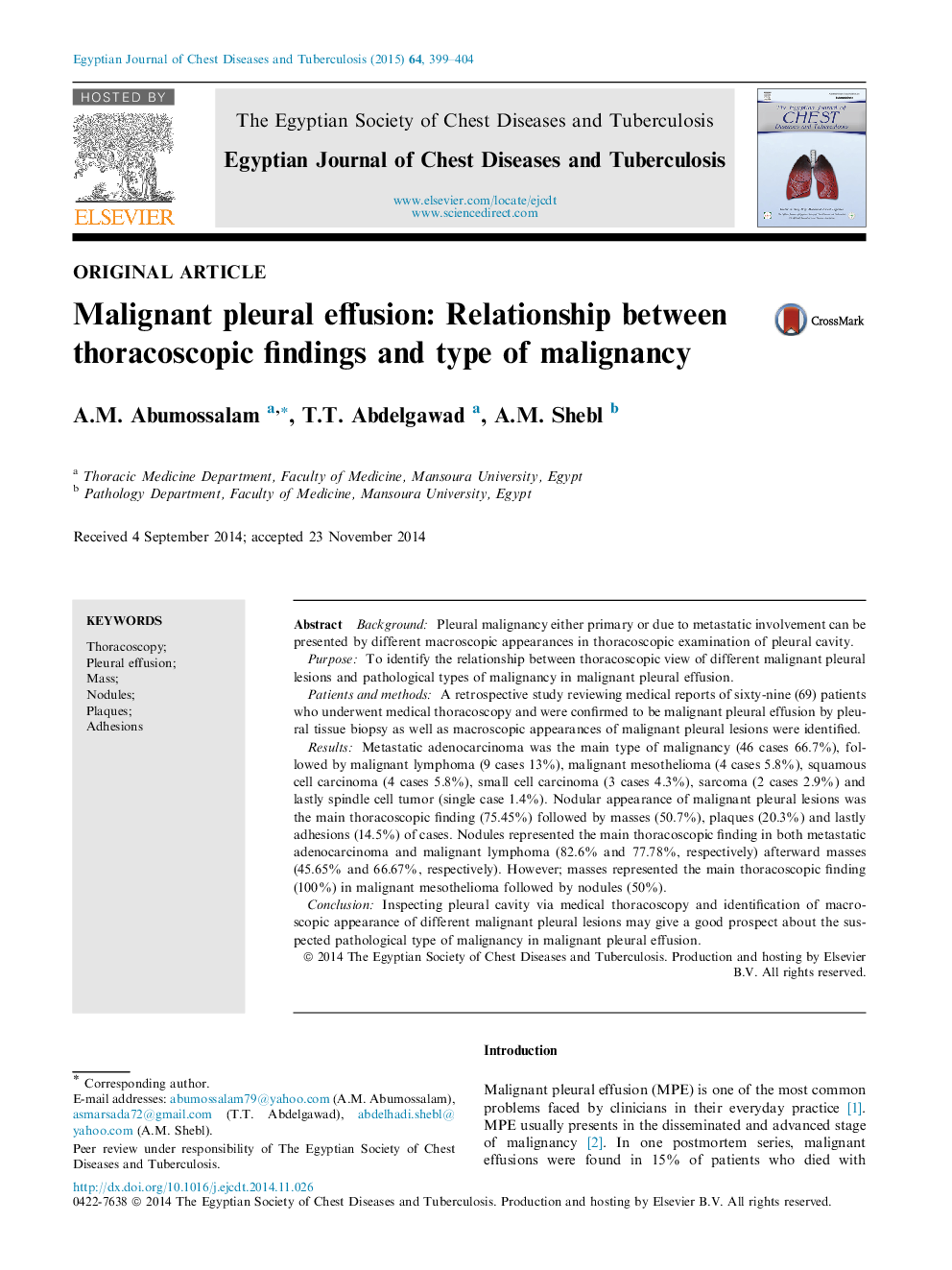| Article ID | Journal | Published Year | Pages | File Type |
|---|---|---|---|---|
| 3399985 | Egyptian Journal of Chest Diseases and Tuberculosis | 2015 | 6 Pages |
BackgroundPleural malignancy either primary or due to metastatic involvement can be presented by different macroscopic appearances in thoracoscopic examination of pleural cavity.PurposeTo identify the relationship between thoracoscopic view of different malignant pleural lesions and pathological types of malignancy in malignant pleural effusion.Patients and methodsA retrospective study reviewing medical reports of sixty-nine (69) patients who underwent medical thoracoscopy and were confirmed to be malignant pleural effusion by pleural tissue biopsy as well as macroscopic appearances of malignant pleural lesions were identified.ResultsMetastatic adenocarcinoma was the main type of malignancy (46 cases 66.7%), followed by malignant lymphoma (9 cases 13%), malignant mesothelioma (4 cases 5.8%), squamous cell carcinoma (4 cases 5.8%), small cell carcinoma (3 cases 4.3%), sarcoma (2 cases 2.9%) and lastly spindle cell tumor (single case 1.4%). Nodular appearance of malignant pleural lesions was the main thoracoscopic finding (75.45%) followed by masses (50.7%), plaques (20.3%) and lastly adhesions (14.5%) of cases. Nodules represented the main thoracoscopic finding in both metastatic adenocarcinoma and malignant lymphoma (82.6% and 77.78%, respectively) afterward masses (45.65% and 66.67%, respectively). However; masses represented the main thoracoscopic finding (100%) in malignant mesothelioma followed by nodules (50%).ConclusionInspecting pleural cavity via medical thoracoscopy and identification of macroscopic appearance of different malignant pleural lesions may give a good prospect about the suspected pathological type of malignancy in malignant pleural effusion.
